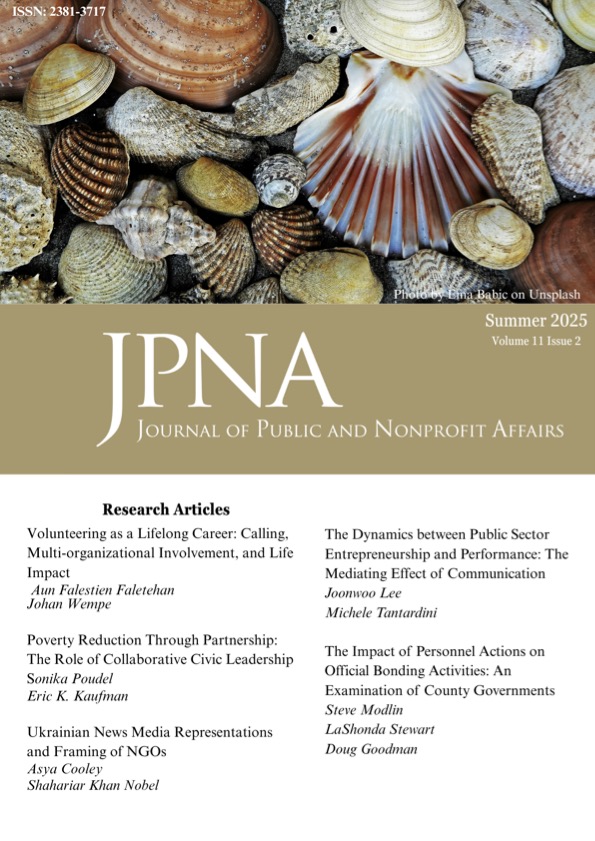Ukrainian News Media Representations and Framing of NGOs
DOI:
https://doi.org/10.20899/jpna.k18pfh33Keywords:
NGOs, Ukraine, Media framing, News Coverage, Nonprofit sectorAbstract
This study examines how Ukrainian news media portray and frame nongovernmental organizations (NGOs) from 2019 to 2024 using quantitative content analysis. Despite NGOs' crucial role in Ukrainian society, they face low public trust, political instability, and a lack of research on their media representations. Findings from 306 news articles reveal that NGOs received positive coverage, focusing on their activities and role as information sources. However, episodic framing and portrayal as story attributes rather than primary subjects dominated, potentially limiting public understanding of their broader impact. The study suggests that NGOs should engage proactively with media to promote thematic framing and showcase their work, while journalists should consider the implications of their framing choices. This research contributes insights for stakeholders working to strengthen civil society in Ukraine and highlights the importance of strategic communication for NGOs in challenging environments.
Downloads
Published
Issue
Section
License
Authors who publish with this journal agree to the following terms:
- Authors retain copyright and grant the journal right of first publication with the work simultaneously licensed under a Creative Commons Attribution License that allows others to share the work with an acknowledgment of the work's authorship and initial publication in this journal.
- Authors are able to enter into separate, additional, contractual arrangements for the non-exclusive distribution of the journal's published version of the work (e.g., post it to an institutional repository or publish it in a book), with an acknowledgment of its initial publication in this journal.
- Authors are permitted and encouraged to post their work online (e.g., in institutional repositories or on their website) prior to and during the submission process, as it can lead to productive exchanges, as well as earlier and greater citation of published work (see, The Effect of Open Access).







